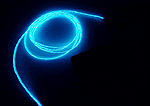Table Of Contents
We recommend these pages viewed in dark theme (click the sun icon in the top right of the page)
<!-- TODO FIXME: add OnHover HoverImage Component here -->
// TODO FIXME: this function was onmouseover on the glowstring.gif
<!-- LitE Line Electroluminescent string! FadeObjects = new Object(); FadeTimers = new Object(); /\* object - image to be faded (actual object, not name); \* destop - destination transparency level (ie 80, for mostly solid) \* rate - time in milliseconds between trasparency changes (best under 100) \* delta - amount of change each time (ie 5, for 5% change in transparency) \*/ function Fade(object, destOp, rate, delta){ if (!document.all) return if (object != "\[object\]"){ setTimeout("Fade("+object+","+destOp+","+rate+","+delta+")",0); return; } clearTimeout(FadeTimers\[object.sourceIndex\]); diff = destOp-object.filters.alpha.opacity; direction = 1; if (object.filters.alpha.opacity > destOp){ direction = -1; } delta=Math.min(direction\*diff,delta); object.filters.alpha.opacity+=direction\*delta; if (object.filters.alpha.opacity != destOp){ FadeObjects\[object.sourceIndex\]=object; FadeTimers\[object.sourceIndex\]=setTimeout("Fade(FadeObjects\["+object.sourceIndex+"\],"+destOp+","+rate+","+delta+")",rate); } } -->

- CD 4001 Quad NOR gate
- CD 4011 Quad NAND gate
- CD 4013 Dual D Flip Flop
- CD 4014 8-Stage shift register
- CD 4017 Divide by 10
- CD 4020 14-Stage Bin Counter
- CD 4024 7-Stage Binary Count
- CD 4026 7-Segment Driver
- CD 4040 12-Stage Bin Counter
- CD 4049 HEX Inverter
- CD 4060 14-Stage with Osc
- CD 4069 HEX Inverter
- CD 40106 Hex Schmitt Trigger
- CD 4510 BCD up/down Counter
- CD 4511 BCD TO 7-Segment
- LM 324 Quad OP-AMP
- LM 380 4 watt amp
- LM 386 0.5 watt amp
- LM 741 OP-AMP
- OP-AMP List
- Opto Coupler List
- PIC Chip List
- S/mount Diodes/Zeners
- Surface Mount LEDs
- Surface Mount Resistors
- Surface Mount Transistors
- Surface Mount Outlines
- Voltage Regulators
- 40106 Hex Schmitt Trigger
- 555 Timer Chip
- 556 Dual Timer Chip
- 567 Tone Decoder
- 74c14 Hex Schmitt Trigger
What is LITELINE?
LitELine is electroluminescent “String” or “Rope” or “Spaghetti” or ""Tubing” that gives off light when an AC voltage is connected to two fine wires at its end. It comes in many colours and can be “blinked” or “flashed” or “dimmed.”
It is very similar to miniature neon tubing as seen in outdoor signs and makes an ideal miniature version of a neon sign.

 requires an AC voltage of approx 100v @600Hz to produce good brightness. This can be obtained via a miniature inverter and these are available from 3v to 12v operation. For the 3v inverter supplied in the kits described below, up to 1 metre of
requires an AC voltage of approx 100v @600Hz to produce good brightness. This can be obtained via a miniature inverter and these are available from 3v to 12v operation. For the 3v inverter supplied in the kits described below, up to 1 metre of  can be illuminated. The supply current requirement is 45mA.
can be illuminated. The supply current requirement is 45mA.
 can be bent and twisted to any shape and can be used to create all types of signs, from miniature lighting effects on pictures and prints to signs for “in-store” advertising such as “EXIT,” “WELCOME” or “OPEN”.
can be bent and twisted to any shape and can be used to create all types of signs, from miniature lighting effects on pictures and prints to signs for “in-store” advertising such as “EXIT,” “WELCOME” or “OPEN”.  comes in a range of 12 colours, here are a few:
comes in a range of 12 colours, here are a few:

When supplied in short lengths, it comes in a loose coil. For long lengths, it comes on a spool.
When creating a sign, it is normally placed in a groove in a sheet of clear perspex to create a “mystical” effect, where everything seems to be “hanging” in space.  can be glued in position with clear silicon sealant. Some glues, such as “super glue” become white when set and detract from the clearness of the sign. Of course
can be glued in position with clear silicon sealant. Some glues, such as “super glue” become white when set and detract from the clearness of the sign. Of course  can be wrapped around items or threaded through holes in a sheet of foam or simply hung by fine threads to give a “spiders web” effect. A more-open display will create more intrigue. It can also be used under water or in automobiles, around or outside a house to produce the house-number or to highlight the outline of a window or door. It can also be used to identify a dangerous step or illuminate a keyhole - anything decorative to safety to security. The possibilities are limitless.
can be wrapped around items or threaded through holes in a sheet of foam or simply hung by fine threads to give a “spiders web” effect. A more-open display will create more intrigue. It can also be used under water or in automobiles, around or outside a house to produce the house-number or to highlight the outline of a window or door. It can also be used to identify a dangerous step or illuminate a keyhole - anything decorative to safety to security. The possibilities are limitless.
Here are some of the signs you can produce with  :
:




 is almost identical to working with a miniature version of neon. All the advertising signs, effects and displays you have seen using neon, can now be made in a miniature form with
is almost identical to working with a miniature version of neon. All the advertising signs, effects and displays you have seen using neon, can now be made in a miniature form with  . The final result is almost identical but the cost is considerably less and the voltages are not the very high voltages required for neon.
. The final result is almost identical but the cost is considerably less and the voltages are not the very high voltages required for neon.
Both  and Neon signs can be constantly illuminated or placed in “flashing” mode.
and Neon signs can be constantly illuminated or placed in “flashing” mode.  has one additional advantage. It can be put into a “dimming” mode as shown in the example below.
has one additional advantage. It can be put into a “dimming” mode as shown in the example below.
Place your mouse over the display to so see it dim:

The articles on the following pages concentrate on the 2.3mm size however the information can be used for all sizes.
 is available in five sizes:
is available in five sizes:
The thinnest is 0.7mm diameter and is called “MicroLitE Line”.
This size is only available in OEM quantities and must be totally encapsulated in the product you are developing.The next size is 1.25mm diameter and is called “MiniLitE Line”.
This size is ideal for sewing into garments and fitting into other items where its extremely thin diameter and high flexibility is an advantage.The next size is 2.3mm diameter and is called “MidiLitE Line”.
This size has a larger diffusion surface area and therefore the light-output is enhanced due to the scattering effect within the fibre.The next size is 3.2mm diameter and is called “MaxiLitE Line”.
This size has a much larger diffusion surface area and therefore the light-output is enhanced due to the scattering effect within the fibre. This size is recommended for signage and visual displays.The largest size is oval 3.2x5mm. It is called “MonsterLitE Line”.
This is a twin light emitting fibre cable, and exhibits a much larger broadside surface and therefore the light-output is almost double. This fibre is the recommended size for large signage and visual displays.
All sizes can be purchased in full rolls of 250 metres or cut to any length.
GETTING STARTED
To get you started in this “World of Illumination,” we have 5 kits available:
KIT 1 US$19.00
KIT 1 consists of 5 lengths of different coloured electroluminescent  (each 10cm long) plus a 3v inverter with batteries. All you have to do is prepare the ends of each piece of electroluminescent
(each 10cm long) plus a 3v inverter with batteries. All you have to do is prepare the ends of each piece of electroluminescent  and solder them to the flying lead from the inverter. The 5 pieces can be connected to the lead or added end-to-end to get an effect 50 cm long.
and solder them to the flying lead from the inverter. The 5 pieces can be connected to the lead or added end-to-end to get an effect 50 cm long.
KIT 2 US$18.50
KIT 2 consists of 1 length of coloured electroluminescent  50cm long plus a 3v inverter with batteries. Please specify the colour required (red is normally supplied in the kit). Connect the electroluminescent
50cm long plus a 3v inverter with batteries. Please specify the colour required (red is normally supplied in the kit). Connect the electroluminescent  to the flying lead of the inverter.
to the flying lead of the inverter.
KIT 3 US $26.00
KIT 3 consists of 2 lengths of coloured electroluminescent  50cm long plus 1 small flat panel of electroluminescence suitable for backlighting a small sign on a model railway display, plus a 3v inverter with batteries. Connect the electroluminescent pieces to the flying lead of the inverter as explained above.
50cm long plus 1 small flat panel of electroluminescence suitable for backlighting a small sign on a model railway display, plus a 3v inverter with batteries. Connect the electroluminescent pieces to the flying lead of the inverter as explained above.
KIT 4 US$17.00
KIT 4 consists of 5 lengths of different coloured electroluminescent  (each 10cm long) plus a kit of components to make your own 3v inverter (batteries included). If you are into electronics, this is the project for you. You will see how electroluminescence works and how the power supply operates. The kit Order-Number is: TE-3V-INV-4
(each 10cm long) plus a kit of components to make your own 3v inverter (batteries included). If you are into electronics, this is the project for you. You will see how electroluminescence works and how the power supply operates. The kit Order-Number is: TE-3V-INV-4
KIT 5 US$18.00
KIT 5 consists of 2 lengths of different coloured electroluminescent  10cm long plus 2 small flat panels of electroluminescence suitable for backlighting a small sign on a model railway display, plus a kit of components to make your own 3v inverter (batteries included). This kit is also for the electronics experimenter. You will get an understanding of how electroluminescence works and how the power supply operates. The kit Order number is: TE-3V-INV-5
10cm long plus 2 small flat panels of electroluminescence suitable for backlighting a small sign on a model railway display, plus a kit of components to make your own 3v inverter (batteries included). This kit is also for the electronics experimenter. You will get an understanding of how electroluminescence works and how the power supply operates. The kit Order number is: TE-3V-INV-5
On the following pages you will learn more about EL (Electroluminescence) and “How it Works.”
Quick Links
Legal Stuff
Social Media


